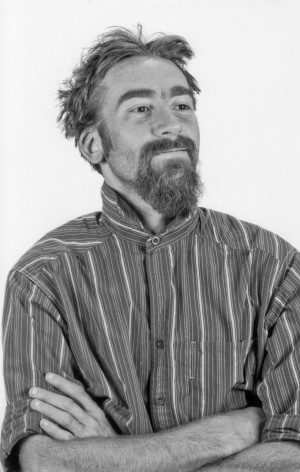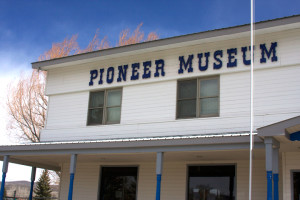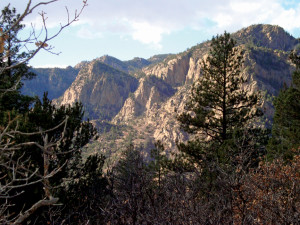By George Sibley
It is hard to find things to write about in a positive and optimistic way these days without feeling like Pollyanna – looking on the bright side of life, like those guys hanging on crosses put it in “The Life of Brian.” But, in an era when nearly everything seems to be going to hell, there is one thing that is getting better and better, and that is beer. All those ales, lagers, pilsners, stouts and other things along a spectrum from hoppy to malty that get lumped together as “beer.”
A feature story in this issue gives an account of the state of beer here today – an account of a phenomenon that didn’t even exist in Central Colorado when I arrived here back in the 1960s: beer handcrafted by people who began with a love of good beer rather than a business plan. Some of them clearly got the business plan side of it down, too. Like our governor. He was so under-opposed when he was elected that it would have been really hard to vote against him; but if it had come down to a hard choice, the tiebreaker for me might have been that part of his marketing plan that involved passing out Post-It notes to his brewery customers, to be posted over urinals or inside stall doors, stating something to the effect of, “All beer comes out the same, but it’s not all the same going in. Wynkoop Brewing Company.” Anyone who could come up with a marketing plan like that, as well as really good beer, ought to be able to run a state that encompasses the spectrum from Boulder to Grand Junction – well, anyway, the kind of state I’d want to live in. The jury is still out on that; he might be taking the neckties surrounding him too seriously to get creative at it. But the beer continues to be good in Colorado, so things could be a lot worse.
But this issue’s focus on breweries – part of the “-eries” series – distilleries, breweries and wineries – makes me want to tap into my own vast, or at least half-vast, experience as a beer drinker and bar habitué in Central Colorado – get in touch with my Inner Beer-Drinker, as John Mattingly might put it. Almost all of that experience was over the Divide in the west side of Central Colorado, in the upper Gunnison valley – although I did have a couple of relatively abbreviated sessions in The Victoria in Salida, clearly a great bar, but not a place to really get into if you had to get over the pass that night. One of those was a night when the pass was temporarily closed for avalanche control. The other was an afternoon session – maybe the best time to drink beer in The Vic – with the late Ed Quillen, at an age when we had both become relatively responsible drinking drivers, or driving drinkers, whichever. (Although I have since thought we were both by then smart enough to know we wouldn’t live forever; so why didn’t I just get a room and stay longer, stay the afternoon and evening and see where it led with Ed? But I didn’t.)
Looking back over my half-century of drinking mostly beer in Central Colorado, I do want to say that the quality of the beer is only one factor in the experience of beer-drinking in Colorado, and it may not be the most important factor. Great beer makes a good bar great, but it can’t make a bar good in itself. So consider this advice for the beer-makers praised in this issue: here are some other things to consider in making the experience of drinking your good beer a great beer-drinking experience.
First Advice: Turn off the television and the CD/MP3/whatever player. The best bars I’ve known have recognized that they have no obligation to provide any diversion to their customers other than the alcohol that pries open the synaptic gaps between brain cells a little, and thus affords the possibility of new mental connections when stimulated through conversation. Frank and Gal’s Bar and Tony’s Tavern in Crested Butte were two bars that bridged the gap between that town’s mining past and its recreational present; both were just big empty rooms with no “theme” other than that provided by whoever were the customers of the day. But they both had big, beautiful old Brunswick backbars with mirrors; when you sat at the bar, you saw yourself and everyone else sitting at the bar. You were looking at yourself, in your community; it was reflective. It didn’t hurt that the lousy piss-thin industrial American beer was a quarter a glass – a dime for an eight-ounce glass at Tony’s for a long time. That made everyone even more reflective.
When I arrived in Crested Butte in the mid-1960s, there were still a number of “old-timers” around – retired coal miners; semi-retired hardrock miners still doing R&D at the Keystone Mine; a handful of retired businessmen from elsewhere who liked to fish a lot; and some unemployed sons (dangerous until they discovered I was harmless). I learned to appreciate history sitting in Frank’s and Tony’s on afternoons in Crested Butte when I was publisher and editor of a four-to-eight page newspaper. Really, an excuse to sit in bars, watching old men in the mirrors who were telling me, via the mirrors, the history of the town as they saw it – had seen it – through those mirrors. I learned the connection between time and place, as they placed events in time by what was going on in the various places of the town when the event occurred. I learned to recognize the sidelong glance to someone else, caught in the mirror – Back me up here; I’m gonna do a little embroidery – when history was going to be improved, perhaps diverted from a treacherous current. History was still alive on those bars, in those mirrors.
A lot was lost when those mirrors were replaced by televisions – now big flat-screen TVs – that take you away from where you are and dump you into 24/7 sports events. The music is played too low to really listen to but is too much background noise to encourage conversation. Forget it; bring back the jukebox – if things get so boring that someone feels compelled to spend a quarter. But silence is not always bad; sometimes it is just reflective.
Second Advice: Encourage meetings. Most of the most interesting things I’ve been involved in, in Central Colorado, have begun in bars. This past summer, Crested Butte celebrated the 40th anniversaries of two things that started in bars: the Crested Butte Arts Festival and the Crested Butte Mountain Theatre. I was present at the creation of both, and can attest to their origins. Last month, we celebrated the 45th end-of-winter-welcome-spring Flauschink Festival, which also started in a bar and has never really escaped its roots, thank God. Many organizations that start in bars reach points in their development at which they no longer want to acknowledge their origins. Too bad; it never improves them. But you can’t have a good meeting in a bar with a television babbling behind the bar where the mirror ought to be, and speakers hanging in every corner.
I am currently a member of a couple of serious water organizations in the Gunnison Basin, organizations that take themselves fairly seriously but that are both in need of some of that enlargement of the synaptic gaps that can lead to creative conversation. I am undertaking a subtle campaign to get more of the committee meetings for those organizations to take place in bars – especially now that there is really high-quality beer available in most local bars, whether they brew it themselves or not. Does better beer result in better committee work? The jury is still out, probably taking a leak. But we did pretty well on the lousy piss-thin industrial American beer that was all we had way back when.
Third Advice: Dance more. Turn off the TV and make the customers use the jukebox during the regular days. But as often as you can find excuses to do so, bring in a band and have a dance. If we were truly an intelligent, community-oriented society, we would consider community dances as infrastructure to be supported through taxes. The community that doesn’t dance together won’t chance together, and just think about that one for a moment.
In my personal opinion, if the band doesn’t have an accordion, it isn’t going to be a community dance; but that’s probably just because I learned how to dance, and how important it is to dance regularly, in Crested Butte, where the Stomach Steinway was the core instrument for a community that had learned how to dance because dancing was affordable for those with not much, and freeing if not free for everyone who would dance.
Well, I could go on. But, the bottom line here, I guess, is that I am happy to live in a place that is learning how to make ever-better beer, and has good places to drink it. I grew up in a middle-class America that pretended to not be as drunk as it often was – in a family that sort of swallowed the abstinence myth whole. Believe it or not, I actually never drank a beer until I was officially old enough to do it legally. And lacking much cultural guidance, I drank badly for a number of years, once I slipped from those mind-forged manacles. I’ve since been blessed by being able to get to the two-to-three-beer high – and stop there, with the mind slipped from other cultural manacles, and riding interesting winds and waters to new places. God bless good beer – and good places to drink it with good people. Life is enriched. Thoughts from the Inner Beer-Drinker, riding a three-beer crest.
George Sibley indulges his Inner Beer-drinker mostly along North Main Street in Gunnison these days.



